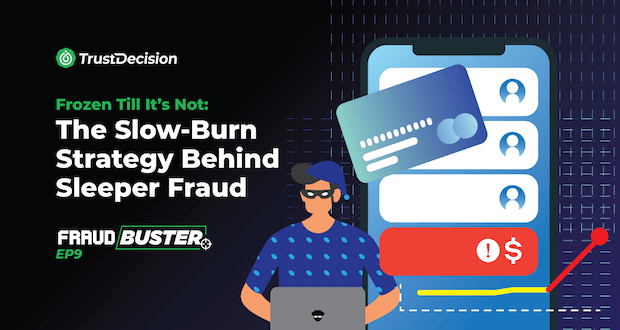Understanding Fraud Applications
Fraud applications encompass a wide range of deceitful activities, including identity theft, credit card fraud, and account takeover. These fraudulent activities often involve the use of stolen or fabricated information to gain unauthorized access to financial services or products. For example, in credit card fraud cases, fraudsters may use stolen credit card information to make unauthorized purchases or apply for new credit cards in the victim's name. Similarly, in credit application fraud detection, fraudsters may use falsified information to secure loans or lines of credit.
Importance of Vigilance
Businesses must remain vigilant in detecting and preventing fraud applications for several compelling reasons. Adaptive fraudsters constantly evolve their tactics, making it essential for businesses to stay ahead of the curve. Continuous monitoring and updating security protocols are crucial to effectively detect and mitigate these ever-changing threats.
Customer trust is another critical factor. Clients expect businesses to safeguard their personal information, and effective fraud prevention measures enhance this trust. When customers feel secure, they are more likely to engage confidently with the business, leading to increased satisfaction and loyalty.
A proactive approach to fraud prevention also contributes to a positive industry reputation. Businesses known for robust security measures are more likely to be respected and trusted within their industry. This strong reputation can attract new customers and partners, setting the business apart in a competitive market.
Finally, preventing fraud ensures the financial stability of businesses and protects stakeholders. Fraudulent activities can lead to substantial financial losses and destabilize a business. By implementing robust fraud prevention measures, businesses can safeguard their financial health and ensure long-term stability, protecting the interests of all stakeholders involved.
The Menace of Fraud Applications
Fraud applications represent a shadowy underworld where cybercriminals exploit vulnerabilities in application processes. Let’s delve into the intricate web of fraud patterns and the sophisticated schemes that threaten businesses.
Understanding Fraud Patterns
Fraudsters employ a variety of tactics to deceive businesses and gain access to resources, making it essential for organizations to understand these common strategies. One prevalent method is the use of stolen identities. Fraudsters often obtain personal information from real individuals or fabricate entirely new identities to create seemingly legitimate profiles. These stolen identities are then used to open accounts, apply for credit, or make unauthorized transactions, causing significant financial and reputational damage to businesses.
Another sophisticated tactic is the creation of synthetic identities, which involve a blend of real and falsified data. Fraudsters use these synthetic identities to establish creditworthiness over time, gradually building trust with financial institutions. Once they have gained sufficient credibility, they exploit credit lines and disappear, leaving businesses to deal with the financial fallout. This method is particularly challenging to detect because the synthetic identities appear legitimate and have a history of responsible behavior.
Application manipulation is another common strategy used by fraudsters. By altering application details such as income, employment history, or address, they can appear more creditworthy than they actually are. This deception allows them to secure loans, credit cards, or other financial products that they would not qualify for under truthful circumstances. Businesses must be vigilant in verifying the accuracy of application information to prevent such fraudulent activities.
Layering techniques involve creating complex layers of transactions to obscure fraudulent activities. Fraudsters use multiple accounts, transfers, and transactions to make it difficult to trace the origin of illicit funds. This method is often employed in money laundering schemes, where the goal is to make the money trail so convoluted that it becomes nearly impossible to detect the initial source of the funds. Businesses need advanced monitoring and analytical tools to identify and unravel these complex transaction patterns.
In summary, understanding fraud patterns is crucial for businesses to effectively combat fraudulent activities. By recognizing tactics such as stolen identities, synthetic identities, application manipulation, and layering techniques, organizations can implement more robust security measures and stay one step ahead of fraudsters. This proactive approach not only protects financial resources but also enhances customer trust and maintains the integrity of the business.
Bust-Out Fraud
Bust-out fraud is a sophisticated scheme that involves meticulously establishing creditworthy images before executing a rapid and devastating attack. Here’s how it works:
Building Trust: Fraudsters open legitimate accounts, make small transactions, and maintain a positive payment history. This establishes trust with financial institutions.
Exploiting Credit Lines: Once trust is established, the fraudster rapidly maxes out credit lines, often across multiple accounts. They purchase goods, services, or cash advances.
Disappearing Act: After exhausting credit limits, the fraudster disappears, leaving behind a trail of unpaid debts and losses for businesses and lenders.
Key Characteristics of Fraud Applications
Fraud applications exhibit distinct characteristics that businesses must recognize to protect themselves. Let’s explore these key aspects:
Building a Solid Reputation
Fraudsters are adept at creating seemingly legitimate profiles to gain trust and exploit resources. They achieve this through a combination of identity manipulation, gradual engagement, and social engineering.
Identity Manipulation: Fraudsters often use stolen or fabricated identities to establish a credible persona. By providing accurate personal information such as names, addresses, and employment history, they can appear genuine to financial institutions and businesses. This manipulation makes it difficult for organizations to distinguish between legitimate customers and fraudulent actors, allowing fraudsters to infiltrate systems and gain access to resources.
Gradual Engagement: Rather than attempting large-scale fraud immediately, fraudsters often start with small transactions to build a positive reputation. By consistently making on-time payments or conducting legitimate activities, they gradually gain the trust of financial institutions and businesses. This slow and steady approach helps them avoid detection and establish a track record of responsible behavior, which they can later exploit for more significant fraudulent activities.
Social Engineering: Fraudsters also exploit human psychology through social engineering tactics. They engage in friendly interactions, build rapport, and create a sense of trust with financial institutions, businesses, or other individuals. By appearing trustworthy and reliable, they can manipulate people into providing sensitive information or granting access to restricted resources. This psychological manipulation is a powerful tool that fraudsters use to bypass security measures and achieve their fraudulent objectives.
Exploiting Credit Lines
Fraud applications often involve a rapid and strategic exploitation of credit lines, followed by the fraudsters' disappearance. This process typically unfolds in several stages. Initially, once trust is established, fraudsters engage in a credit rush. They apply for credit cards, loans, or other financial products, often across multiple institutions, to maximize their available credit. With these newly acquired credit lines, fraudsters then proceed to make high-value purchases. They swiftly buy expensive items such as electronics, luxury goods, or take out cash advances, utilizing the full extent of their credit limits. These transactions are executed quickly to avoid detection and to maximize the financial gain before any red flags are raised. Finally, after exhausting the credit limits, the fraudsters perform a vanishing act. They disappear without making any payments, leaving businesses and lenders to deal with the financial fallout. This sudden disappearance results in significant losses for the affected institutions, as they are left with unpaid debts and no way to recover the funds.
Trail of Losses
The aftermath of fraud applications creates a trail of losses that reverberates through the entire financial ecosystem. Financial institutions are among the hardest hit, as lenders suffer substantial losses due to unpaid debts. These losses can affect their profitability and overall financial stability, forcing them to tighten lending criteria and increase scrutiny on future applications. Businesses such as retailers, service providers, and e-commerce platforms also face significant challenges. They often have to deal with chargebacks and revenue losses resulting from fraudulent transactions. These financial hits can disrupt their operations and affect their bottom line. Moreover, the impact of fraud extends to consumer trust. Legitimate customers may become wary of using online services or applying for credit due to the fear of falling victim to fraud. This erosion of trust can lead to decreased customer engagement and a reluctance to participate in digital financial activities, further affecting the growth and stability of the financial ecosystem.
Prevention and Mitigation Strategies
To safeguard your business against fraud applications, consider implementing the following robust strategies:
Robust Internal Controls
- Firewalls and Network Security: Strengthen your network security by implementing firewalls, intrusion detection systems, and access controls. These measures prevent unauthorized access to sensitive data and applications.
- Antivirus Software: Regularly update and maintain antivirus software to detect and prevent malware that could compromise your systems.
- Secure Networks: Use secure protocols (such as HTTPS) and encryption to protect data during transmission.
Regular Monitoring
- Financial Statements: Regularly review financial statements for any discrepancies or irregularities. Look for unexpected transactions, unusual patterns, or sudden spikes in activity.
- Bank Accounts: Monitor bank accounts closely. Set up alerts for large transactions, account balance changes, or suspicious activities.
- Transaction Analysis: Investigate any anomalies promptly. For example, sudden changes in spending behavior or unexpected account access should raise red flags.
Customized Risk Models
- Industry-Specific Models: Develop risk models tailored to your industry. These models identify fraud attempts across the user journey, from application submission to transaction completion.
- Behavioral Analysis: Analyze applicant behavior patterns to identify deviations from the norm. Unusual behavior may indicate fraud.
Identity Verification
- Facial Recognition: Implement robust facial recognition technology to verify applicant identities. Compare submitted photos with official identification documents.
- Document Verification: Ensure the authenticity of submitted documents by using advanced document verification technologies. This includes checking for signs of tampering, validating the document against known templates, and cross-referencing information with authoritative databases.
- Fingerprint Scanning: Use biometric data (such as fingerprints) for secure identity verification.
Cross-Channel Analysis
- Multi-Channel Checks: Utilize data checks across multiple channels (web, mobile, call center) to prevent fraudsters from exploiting vulnerabilities. Consistent monitoring ensures a holistic view of applicant behavior.
- Alternative Credit Data: Leverage alternative credit data, such as utility payments, rental history, and social media activity, to gain a more comprehensive understanding of an applicant's creditworthiness. This can help identify inconsistencies and potential fraud that traditional credit checks might miss.
- Credit Bureau: Integrate data from credit bureaus to cross-verify the information provided by applicants. Credit bureau data can offer insights into an applicant's credit history, outstanding debts, and previous fraud attempts, providing an additional layer of security.
Compliance Checks
- AML (Anti-Money Laundering) Rules: Incorporate AML rules to detect suspicious transactions and comply with regulatory requirements.
- KYC (Know Your Customer) Rules: Verify customer identities thoroughly to build trust and prevent fraud.
TrustDecision’s Application Fraud Detection
TrustDecision’s Application Fraud Detection is a cutting-edge platform designed to fortify your business against the ever-evolving threat of fraud applications. By seamlessly integrating sophisticated technologies, TrustDecision empowers organizations to build trust, enhance security, and safeguard their financial assets.
Key Features
- Sophisticated Data Analytics
- Real-time Data Integration: TrustDecision continuously monitors incoming application data, integrating information from various sources. This real-time approach allows for immediate detection of suspicious patterns.
- KYC++ (Know Your Customer Plus): Beyond traditional KYC checks, TrustDecision’s enhanced verification process includes behavioral analysis, biometrics, and cross-referencing with external databases. This comprehensive approach ensures robust identity verification.
- Machine Learning Models
- Adaptive Algorithms: TrustDecision’s machine learning models evolve dynamically. As fraudsters adapt their tactics, the algorithms learn from emerging patterns and adjust their detection strategies accordingly. This adaptability is crucial in staying ahead of fraud attempts.
- Reduced Operational Costs
- Holistic Applicant Behavior Analysis: TrustDecision examines the entire applicant journey, from initial submission to transaction completion. By analyzing behavior across channels and touchpoints, operational inefficiencies are minimized.
- Streamlined Processes: Automated risk scoring, real-time alerts, and efficient case management reduce manual workload and operational costs.
Conclusion
In the ever-evolving landscape of business and technology, fraud applications pose a significant challenge. As we’ve explored in this article, these deceptive submissions can wreak havoc on financial institutions, businesses, and consumer trust. However, armed with knowledge and proactive strategies, organizations can unmask fraud applications and protect their assets.
Here are the key takeaways:
- Vigilance Matters: Businesses must remain vigilant, constantly adapting to new fraud patterns. TrustDecision’s Application Fraud Detection provides the necessary tools to stay ahead.
- Building Trust: Fraudsters create seemingly legitimate profiles, gradually gaining trust before executing their schemes. By understanding these tactics, businesses can identify red flags early.
- Bust-Out Fraud: The sophisticated bust-out fraud scheme involves establishing creditworthiness and then rapidly exploiting credit lines. TrustDecision’s real-time analytics and adaptive algorithms are essential in combating this menace.
- Prevention Strategies: Implement robust internal controls, monitor transactions, and leverage advanced analytics. TrustDecision’s holistic approach ensures efficient risk management.
- TrustDecision’s Solution: With features like real-time data integration, machine learning models, and reduced operational costs, TrustDecision empowers businesses to safeguard against fraud applications.
Remember, fraud prevention is a collective effort. By sharing knowledge, adopting best practices, and utilizing cutting-edge tools, we can build a safer digital ecosystem for businesses and consumers alike. Stay informed, stay vigilant, and trust in the power of smart solutions!






.png)







